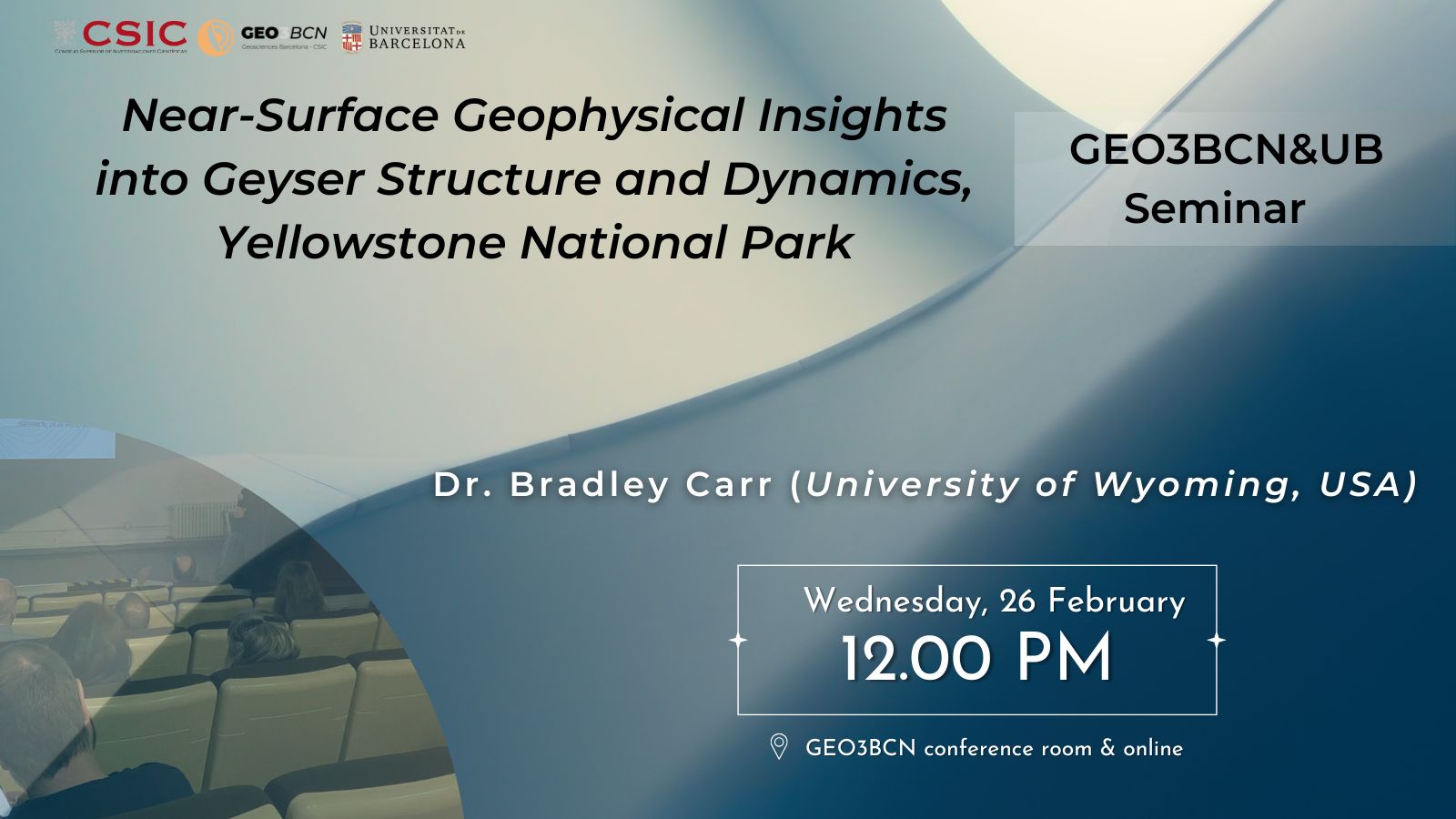12 de febrero de 2025
Near-Surface Geophysical Insights into Geyser Structure and Dynamics,Yellowstone National
- Dr. Bradley Carr (University of Wyoming, USA)
- Wednesday, 26 February | 12.00 PM (CET)
- Geosciences Barcelona Conference room & online
Abstract
Hydrothermal geysers are visually engaging geomorphic features that represent a rapid and occasionally violent release of energy manifested as hydrothermal fluids/vapors launched skyward. Although not completely rare worldwide, hydrothermal geysers intrigue humans now and throughout history. Fortunately for us, Yellowstone National Park is home to roughly 500 geysers, making it the most concentrated geyser field in the world. Yet, the dynamics of geyser eruptions are uncertain. Much of this uncertainty stems from a lack of knowledge of their subsurface structure. So fundamentally, we must ask questions about what the “plumbing” looks like before we study how it functions? Geophysical imaging provides an opportunity to image these structures as well as observe parts of the dynamic geyser behavior.
To start, we will discuss various active geophysical methods to constrain the characteristics of the structure and better understand the subsurface geometry of Spouter & Old Faithful Geyser (Yellowstone National Park) and their “hydrothermal geyser reservoir” structures. After establishing the structure, we will explore how geophysical data informs geyser dynamic models for Upper Geyser Basin, YNP. Again, we apply active, time-lapse electrical (ERT & SP) and electromagnetic (TEM) geophysical methods, sensitive to the subsurface electrical resistivity properties, to track hydrothermal fluid and vapor through a geyser system at Spouter Geyser and Old Faithful, Yellowstone National Park.
About the speaker
Brad Carr, who obtained his Ph.D. degree in Geophysics at the University of Wyoming in crustal reflection seismology, is a Sr. Research Scientist in the department of Geology and Geophysics and Director of the Univ. of Wyoming Near-Surface Geophysics Instrument Center (UWNSG). His research focuses on the integrated use & development of near surface geophysical methodologies to understand near-surface material geophysical properties and groundwater recharge/movement in mountain headwater environments, hydrothermal areas, the Earth’s Critical Zone, and contaminated (or threatened) municipal aquifers. Currently, he has multiple ongoing critical zone and hydrogeophysical research projects in & around the U.S. in crystalline units (primarily granites and metagranites), schists, basalts, rhyolites and tuffs), Yellowstone National Park geyser & phase separation systems, as well as geophysical characterization and monitoring of Uranium depositional and roll front deposits in Wyoming, USA.

